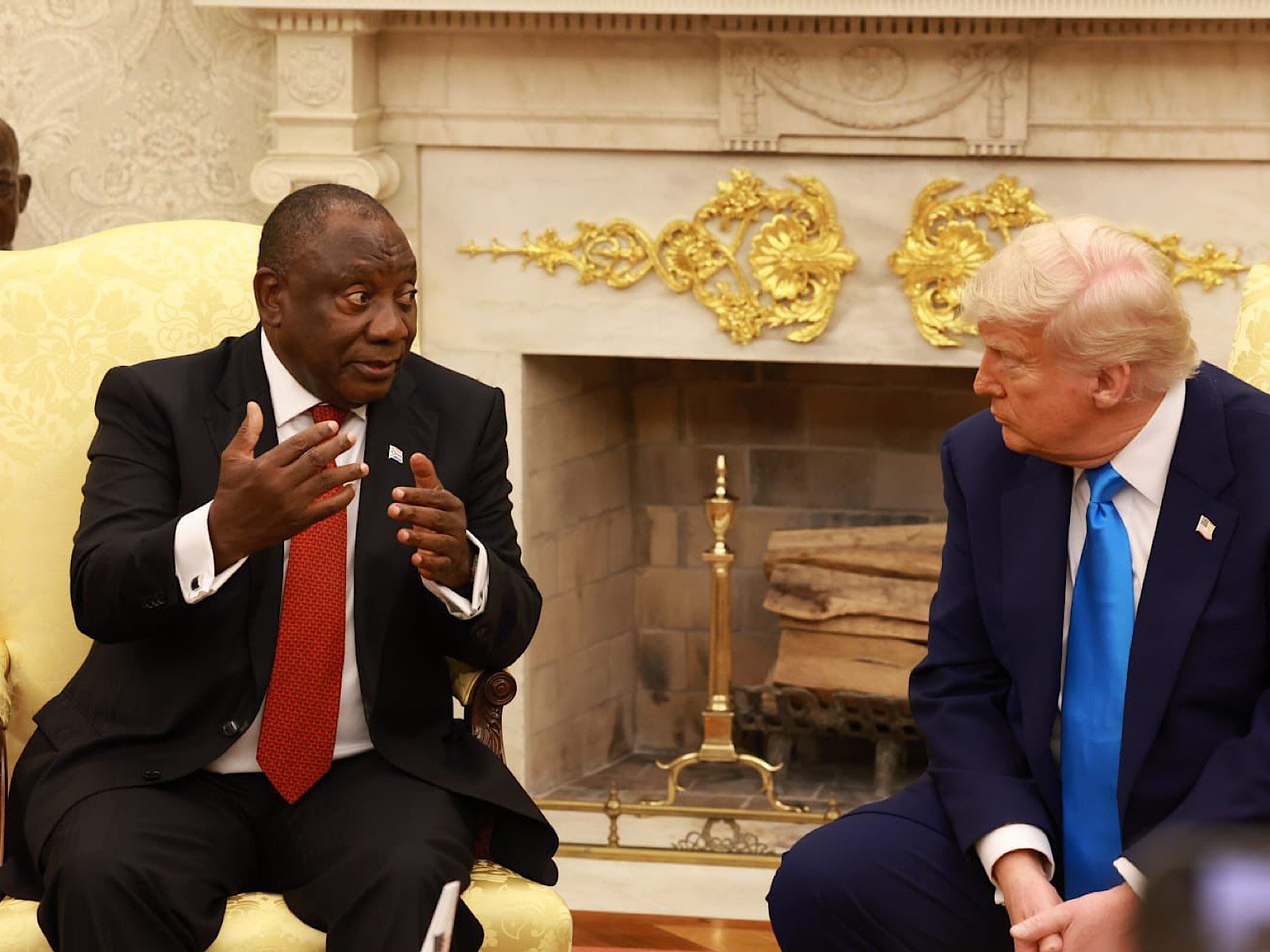President Cyril Ramaphosa and Democratic Alliance leader John Steenhuisen proved to the world that South Africa’s new government of national unity is solid and here to stay, writes Zukile Majova on his Real Politics column.
South Africans were caught up in the drama of United States president Donald Trump trying to ambush President Cyril Ramaphosa during a state visit. But that was not the big story.
Trump failed to outplay Ramaphosa, who gave just enough to stroke the American’s ego — but in the end, South Africa walked away as the real winner.
The world got to see South Africa’s unity government in action, and it was impressive. Ramaphosa and Steenhuisen showed the kind of leadership that reassures both global investors and citizens back home.
This was a big moment for a country battling serious problems, especially crime.
Just this week, Police Minister Senzo Mchunu announced that murder had dropped in all but one province. Still, the numbers are brutal. Between January and March, 5,727 people were killed and 10,688 rapes were reported.
Given the level of violence, you’d think farms would be a top target. Farmers are some of the wealthiest people in rural areas. Their properties are isolated and often hold cash to pay workers, buy fuel and keep operations running.
But the stats say otherwise. Only 12 murders happened on farms this year — and just one white farmer was among the dead.
Trump’s past claims of a white farmer “genocide” in South Africa? This so-called genocide would be the slowest in world history.
But let’s get back to Washington.
While the exact trade deals are still unclear, South Africa hit its main goal — boosting investor confidence. American business leaders said they’re interested in putting money into South Africa. There are already more than 600 United States companies here.
Communications Minister Solly Malatsi is already talking about updating laws to make it easier for foreign companies to invest in our Information and Communications Technology sector.
That includes new rules to allow “equity equivalence” — meaning companies like Elon Musk’s Starlink could contribute to development without giving up ownership. That could bring fast internet to remote areas and fire up the tech sector.
South Africans already own more than 120 million smartphones — many people have two to deal with poor signal. Better connectivity would change everything.
All of this was made possible by the clear message from Ramaphosa and Steenhuisen: the government of national unity is working.
Despite predictions that it would collapse, the African National Congress and the Democratic Alliance know they need each other to rescue South Africa.
While Trump tried to paint the country as chaotic — using videos of Julius Malema, the EFF leder, chanting old slogans like “Kill the Boer, Kill the Farmer” — Steenhuisen said clearly that the DA had joined forces with Ramaphosa to keep extremists out of power.
The clearest example is in KwaZulu-Natal. Former president Jacob Zuma’s uMkhonto weSizwe party won 45 percent of the vote. But the unity government partners teamed up to stop Zuma’s party from taking over the R150-billion provincial government.
Ramaphosa is under pressure from some in the ANC to dump the DA and bring in the Economic Freedom Fighters and Zuma’s MK party.
But Steenhuisen told Trump that would destroy any hope of growth and unity.
Still, Steenhuisen’s visit to Washington caused drama at home. DA conservatives slammed him on social media, saying he failed farmers and sold out to the ANC.
This kind of backlash could hurt the DA. Federal Council Chairperson Helen Zille knows the danger. The plan is for the party’s record of clean governance to win over black middle-class voters.
If that worked, the DA could afford to lose some rightwing voters to the Freedom Front Plus. But so far, black middle-class support hasn’t translated into votes.
In the last election, 18 percent of ANC voters turned away because of corruption and poor service. But most of them didn’t go to the DA — over 15 percent backed Zuma’s MK party.
That shows the public is tired of the ANC but not ready to fully back the DA.
Now the DA risks helping the ANC stay in power — without getting much in return.
Zille says they will keep pushing the boundaries. But time is short. With local elections coming, the DA must prove it can deliver in government.
They’ve often said that voting for small parties just helps the ANC, because the ANC can rope those parties into coalitions.
That’s how the ANC stayed in control of cities like Gqeberha, eThekwini, Ekurhuleni, Tshwane and Johannesburg — despite not winning majorities.
So the question is: is the DA keeping the ANC in power, or will its role in government be big enough to justify staying in the unity project?
Economic growth, jobs and investor trust will be the only measures that count.
My view: As long as Ramaphosa leads the ANC, the GNU has a chance to survive.
Pictured above: President Cyril Ramaphosa and US President Donald Trump in Washington this week.
Image source: GCIS
